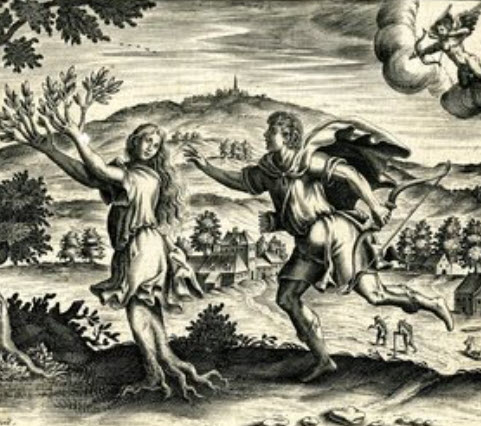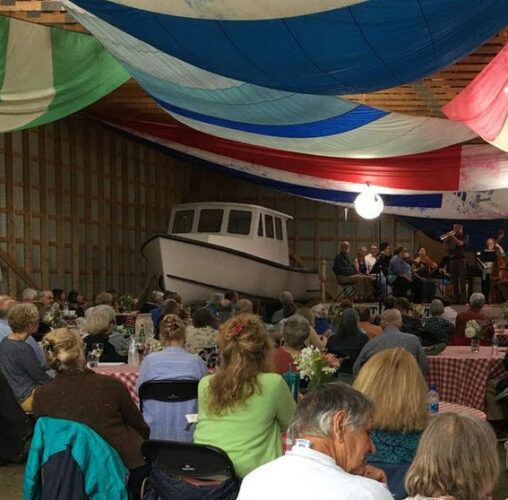by Anne E. Johnson
Published March 6, 2023
The suburban audience is ‘primarily local people that love the arts but won’t go very often’ to NYC or Philly
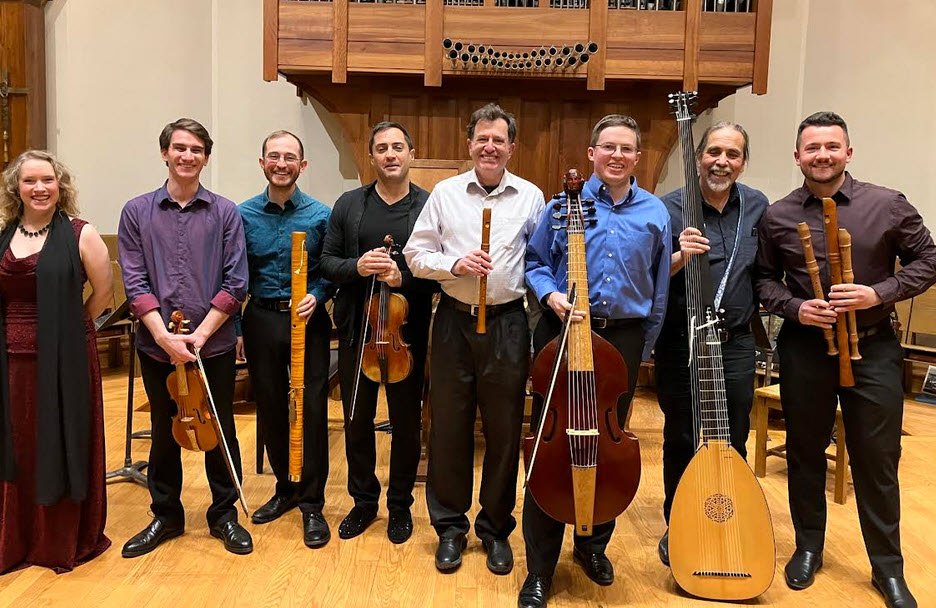
This month—to help celebrate Early Music Month—Philadelphians with a hankering for historical performance could catch big names like Piffaro, Tempesta di Mare, or Thomas Dunford’s Ensemble Jupiter. But if you live on the affluent Main Line or in Buck’s County, ’burbs to the west and north of the city, you can catch early-music concerts close to home. The ensembles are not quite as famous, but the venues are beautiful, and the enthusiasm is huge.
It’s only a half-hour drive from Center City Philadelphia to Bryn Mawr, where organist and conductor Matthew Glandorf started the Main Line Early Music (MLEM) series four years ago. Offering up to eight concerts each season, one of his goals is variety. He books the groups, and then they do their own thing. “I’m not the artistic director, I’m just the facilitator,” he said. The series filled a need for small groups in the area such as Kleine Kammermusik, Les Canards Chantants, and Night Music.
Two local ensembles, La Fiocco and Filament, perform concerts on Sunday, March 12
Glandorf started MLEM at Good Shepherd Episcopal Church in Rosemont (a Bryn Mawr neighborhood), where he was music director. “It was a parish that had gone through hard times but was poised for a kind of renaissance. One way to get some foot traffic is to have a concert series.” The church itself is part of the draw for audiences, what one musician describes as “a gorgeous, absolutely stunning neogothic space, and the acoustics are fantastic.”
In starting the series, Glandorf kept the needs of the artists in mind: “We can offer the space for free, so all ticket proceeds go directly to the musicians. We can pool our resources in terms of our smaller mailing lists. The players can focus on the performance.”
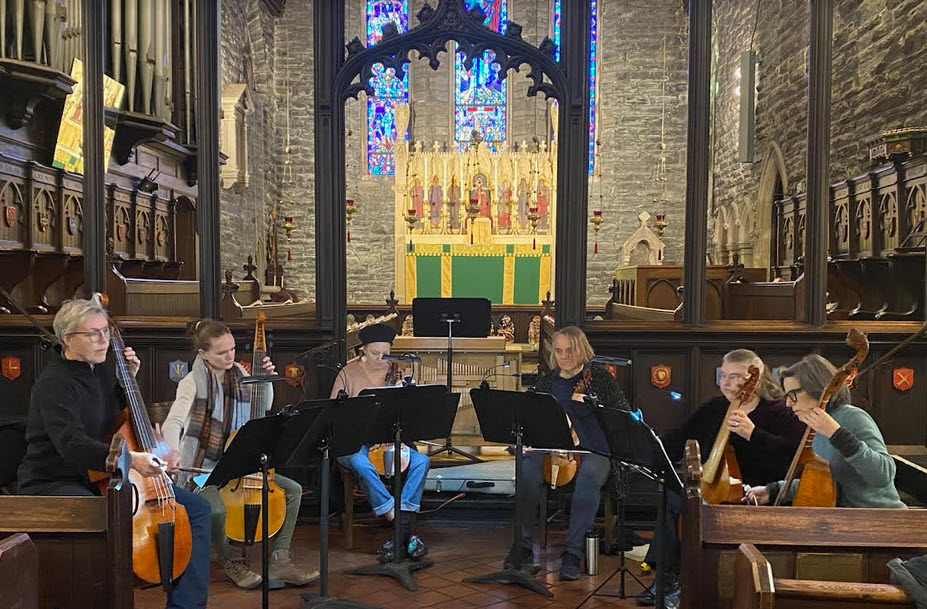
The result encourages creativity, according to three members of Sylvan Consort of Viols—Donna Fournier, Sarah Cunningham, and Margaret Humphrey—who spoke after a rehearsal for their Feb. 19 concert, part of the Main Line series.
“It’s been giving us space for us to dream up things that we’re really interested in doing,” said Cunningham. Their latest program represents the stages of life, inspired by an Orlando Gibbons madrigal.
“I went to this church when I was a little girl,” Cunningham said. Her late parents, Caroline and Ty Cunningham, whom Fournier called the “matriarch and patriarch of Main Line early music,” moved to Bryn Mawr in 1959. “They were totally central and active, from singing in the Renaissance choir to doing little medieval concerts in the cloisters at Bryn Mawr College to having concerts in their house.” Cunningham appreciates the freedom and convenience of MLEM. “To play for a local community on a really high level with great colleagues just down the road from where I live—I love it.”
The instrumental trio Filament gave its first performance at MLEM in 2019 and already considers the series a home away from home. As keyboardist John Walthausen explained, “The early-music community in Philly is quite tight, so all three of us had played in different contexts for Matt Glandorf before, either with Choral Arts or for his really fine church choir.”
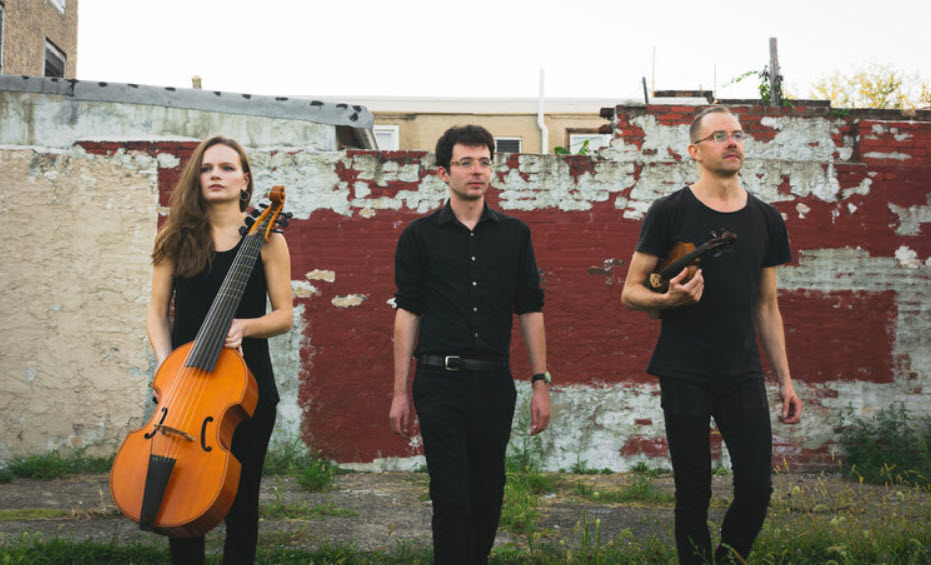
Indeed, the community is close. Soprano Laura Heimes, who sang with Sylvan Consort on Feb. 19 and performed at MLEM with the group Belladonna in 2022, has known Glandorf for three decades. Heimes is also connected to another important force in early music north of Philadelphia—Lewis Baratz, founder and director of the ensemble La Fiocco, which gives a few concerts per season at Trinity Episcopal Church in Solebury, in Bucks County, some 50 minutes from Good Shepherd.
Heimes has performed almost annually with La Fiocco since 2015. “Lewis is wonderful at giving young players opportunities, and singers as well,” she said. “He really nurtures them and mentors them.” Fournier, who subs on cello in La Fiocco, agreed: “Lewis has made opportunities for quite a few folks who are just starting to dive into playing early music.” That’s socially rewarding, too, said Heimes: “I’ll get to a rehearsal, and I get to meet new people.”
Finding new early-music players was how Baratz’s started La Fiocco in 2009. “I reached out to people that I knew, and most of them were modern players who had some interest in Baroque music. We started having weekly reading sessions at my house.” He still hires unknown talent. “I found a young guy who had just graduated from Rutgers and did, like, one semester of performance practice. He made the transition to Baroque violin faster than anyone I’ve ever worked with.”
Spending more than he brought in, Baratz incorporated his ensemble, allowing for donations. That changed his viewpoint somewhat: “Having a 501(c)3 and a board, I now felt that I was a financial fiduciary, and I needed to give my audience the biggest bang for their buck. I started to work with more experienced musicians and bring more people in.”
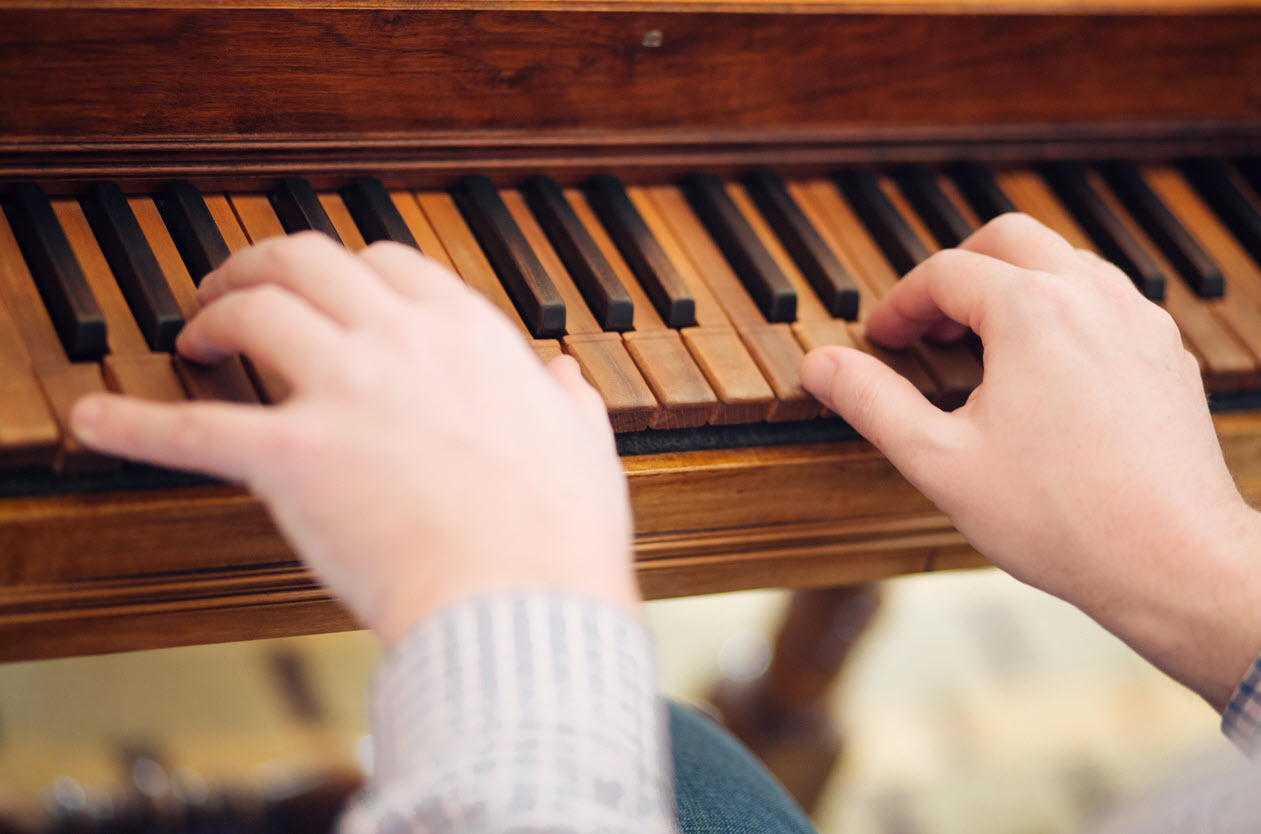
Many of his core players come to Bucks County for the whole weekend of a concert, which they perform first at Christ Congregation in Princeton and the next day at Trinity. Baratz collaborates closely with Trinity’s organist and choirmaster, Timothy Harrell, who curates the church’s 18-20 concerts per year, three or four of which feature La Fiocco.
Harrell’s choir often partners with singers from Bucks County Community College, particularly for their annual Messiah, which they’ve done for 22 years. Trinity became a regular venue for concerts once a pipe organ was installed in 2006, and word spread quickly among performing groups. “Our space is all wood surfaces,” said Harrell. “It’s not a big performing room, so audience members are close to the performers.”
Three years ago, Baratz suggested they do Messiah with early strings and at Baroque pitch. He warned Harrell and other church officials that it would be more expensive, but they didn’t hesitate. “We’ve really enjoyed that different take on it,” said Harrell, “in terms of not just the half step down but the more gentle way of approaching it.” When Harrell waited until June to commit to a 2022 Messiah, Baratz used his widespread goodwill among the early-music community. “Within a day, one day, he had the orchestra lined up,” said Harrell. “I went to all my core people,” recalled Baratz, “and they said, ‘Trinity’s doing it again? Then sure.’”
Bringing new experiences to veteran musicians is a theme for Baratz. He and Laura Heimes are currently plotting a La Fiocco concert for June. “Every single piece on this program, which is not often the case, is completely new to me,” said Heimes. “That makes the learning process so much more fun.”
Without an audience, of course, there could be no series. “My audience are primarily local people that love the arts but won’t go very often to New York or Philadelphia,” said Baratz. Cultivating that audience is one reason La Fiocco does a free Christmas concert. “There are people for whom the $20 or $25 ticket price is a little steep. This brings them in. I don’t want people to be afraid or say they don’t like Baroque music.”
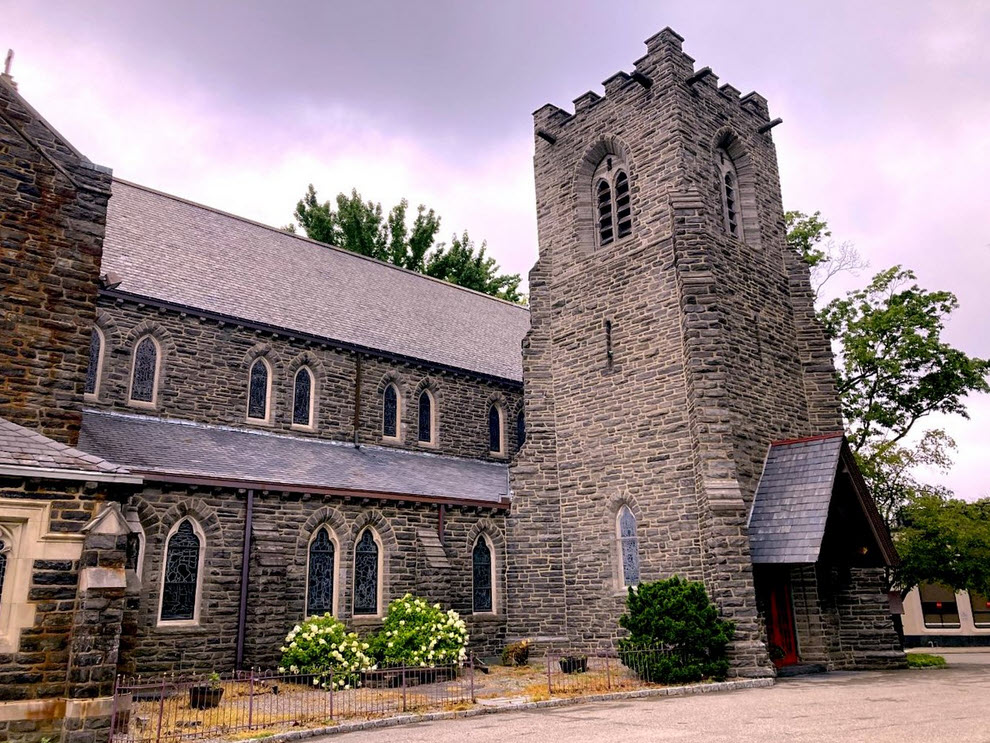
Before starting MLEM, Glandorf saw his potential audience. “You have a lot of very cultured people here. I realized there’s this psychological divide where people think going into the city is a whole thing.” What began as 20-30 people per concert is now 40-50. “At the last concert, I asked ‘Who is here for the first time?’ About half of the hands went up.”
The increase has impressed Walthausen of Filament. “It’s tricky to build an audience in the suburbs,” he said. Fournier noticed the change too: “When it started off, we were playing for each other and our colleagues and our friends, but it feels like it’s getting to a critical mass of audience.” Glandorf envisions combining audience-growing with outreach: “The best way to make anyone enthusiastic about music in general is to get them to make it personally. We have talked about figuring out ways to engage music schools on the Main Line such as Bryn Mawr Conservatory.”
Musicians benefit as much as the audiences do from these suburban series. Four of the six members of Sylvan live on the Main Line. The Humphrey sisters offer their homes for informal playing, welcoming professionals and amateurs alike. “A lot of those players are ones that we’ve seen come time and time again in the series,” said Margaret Humphrey. “We see each other at different venues,” such as MLEM and particular churches in Wilmington and Princeton. As Heimes joked, “We’re the same people, we’re just called something different every week.”
“We’re all friends,” said Glandorf. “There’s this cross-pollination from one group to the others, so it feels like a family affair. Even down to how somebody has to work the box-office and somebody hands out programs.”
The series aim is to provide work for local artists. Glandorf regularly turns down ensembles from Boston or New York who want to play at MLEM. “This is really just meant to support the active early-music groups right here in the Philadelphia region,” he said. Baratz also stays local: “I really do give preference to people that I have a fairly good working relationship with.” He has made exceptions, particularly for West Coast-based composer Glen Shannon, who has written a few new works for La Fiocco.
Artists appreciate the effort. “The priority has been to support not just Main Line people but Philadelphia area artists,” said Fournier. “That might evolve, but it feels like a strength.”
Both directors have wish lists for their series. Not surprisingly, money is a major factor. “We’re literally waiting to receive notice from Harrisburg that we’ve been incorporated,” said Glandorf, “which then opens us up to the possibility of grant funding and also for people to make donations.” Money in means money out. “The hope is eventually we can start to offer proper fees instead of just paying the door.”
Yet Baratz still finds the financial situation frustrating. “The county is known to have several affluent zip codes, but if the county [government] doesn’t give a cent to the arts, it still means our situation is tenuous. There’s no means to apply for money directly from local government. Every cent the organization has, has been me lobbying for it from friends, family, and our local audiences. I do the absolute best that I can.”
Upcoming imaginative spring programming belies any financial hardships. MLEM will present Filament’s program of Haydn and Rameau, Surprise Synchrony, which Walthausen describes as “the very end of the Baroque and the very beginning of the Classical periods meeting together in a not quite expected way.”
La Fiocco’s March program is The Fiddler’s Dance, a tour of several fiddle traditions from 17th-century America—including the contributions of fiddlers of African descent in the Antebellum South. The “audience needs to know they existed and just how much they contributed to American vernacular music,” Baratz said.
The Solebury performance of La Fiocco’s concert is also Sunday, March 12, the same day as Filament’s performance at MLEM, a rather baffling self-imposed competition for the audience. Early-music fans north of Philadelphia have a tough choice.
Anne E. Johnson is a freelance writer based in Brooklyn. Her arts journalism has appeared in the New York Times, Classical Voice North America, Chicago On the Aisle, and Copper: The Journal of Music and Audio. For many years she taught music history and theory in the Extension Division of Mannes School of Music.

